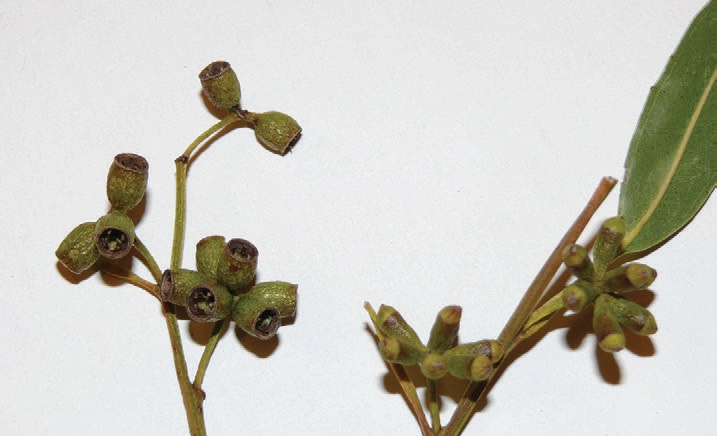Tree identification expertise now based in Nelson
Chris Ecroyd, New Zealand Tree Grower February 2012.
Chris Ecroyd has recently moved to Richmond after 37 years working at the New Zealand Forest Research Institute (Scion) in Rotorua as a botanist specialising in tree identification, especially pines and eucalypts. Here he offers some advice on identifying trees.
Most of us know that timber properties vary greatly between species. Before any time is spent milling timber it is important to know whether it is a firewood species or one which could produce high quality timber. Unfortunately we still see large quantities of high quality timber grown in this country chipped or pulped yet we pay high prices for similar quality imported timber.
Collection of samples
We need to collect or look at the right features. With pines and other conifers this means finding cones, leaves or needles and dormant leaf buds when available. Collect typical mature cones, ideally those that have mature seed or have recently released seeds, rather than immature cones or very old weathered ones. Note whether cones are retained on the tree or if they fall off easily.
Hardwood trees such as eucalypts can be difficult to identify and it is important to collect as much information as possible from the tree. As well as leaves, whenever possible collect mature fruits, flowers and flower buds.
The fruit or seed capsules of some eucalypts can be very small and only three to four millimetres wide when mature. It is worthwhile searching the ground beneath a tree for the capsules if they cannot be reached, but carefully check to see from which tree they may have fallen.

Bark is useful for distinguishing between some species. Notes on the colour and any changes in the bark or photographs will be better than relying on memory.
New resources available
Most of us learn the names of our trees by working with them and gaining experience. It is much more difficult to gather samples from a completely unknown species and to work it out using books and other available resources. These days anyone with a computer and access to the internet has access to an incredible amount of information which can be used to help sort out an unknown tree.
One of the easiest ways to use the internet is to search for photographs by using Google Images or one of the other search engines. Searching is more precise if you use botanical names rather than common names. It does pay to be a little wary of some of the search results because not every image will be of the species searched for, and photographs of other species on a page mentioning the words used in the search are often included.
One of the best sites I have found is the gymnosperm database, a website at www.conifers.org dedicated to conifers. This site has detailed information on most of the conifers and good photographs. There are many other websites with useful information. The main drawback with searching the web is that you need to have an idea on what to search for.
Herbaria online and electronic keys
For those wishing to dig deeper for information there are a number of herbaria with information on their collections of plant specimens available online. One useful example is the searchable database I helped establish at Scion www. scionresearch.com/herbarium. This database allows you to search for specimens with photographs. There are many other examples of online herbarium databases, including some excellent Australian sites which are useful for information on eucalypts and wattles.
For those more willing to use computers there are now some very useful electronic identification keys available. For example, there is a key to cultivated pines freely available on the Scion Herbarium website.This key includes photographs and detailed information on nearly all the different species of pine growing in New Zealand.The Australian CSIRO has developed excellent keys for the eucalypts and wattles but they need to be purchased as DVDs.

 Farm Forestry New Zealand
Farm Forestry New Zealand